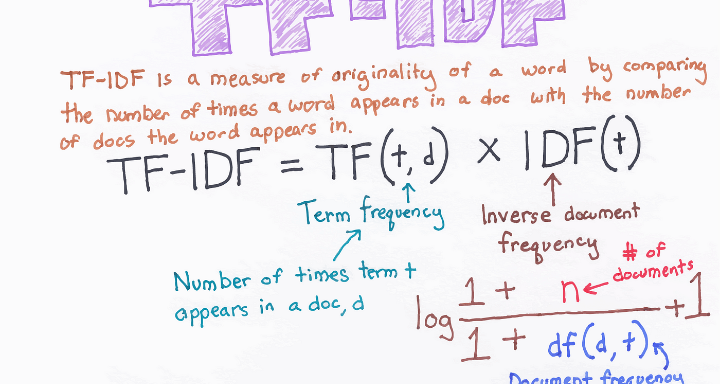Hey fellow devs! Ever wonder how DevsForDevs.com knows exactly what articles you'd love to read? Well, it's not magic—it's TF-IDF! Let's break it down in simple terms and see how this cool tech tool makes your content discovery experience awesome.
What's TF-IDF?
TF-IDF is like a smart algorithm that helps figure out which words are important in an article. It looks at how often words show up in an article (Term Frequency or TF) and how unique those words are across all articles on the site (Inverse Document Frequency or IDF). The result is a score that tells us how special a word is in a specific article compared to the whole gang of articles.
How DevsForDevs.com Uses TF-IDF:
TF-IDF looks at all the articles on the site, checking which words pop up a lot in one article but not so much in others. These words become key players.
We calculate the TF and IDF sever site, and match the 5 most frequent terms of the current post with all other posts, and then return that matched posts from the server!
How to get started with TF-IDF in JavaScript
Using TF-IDF (Term Frequency-Inverse Document Frequency) with JavaScript can be done with the help of various libraries. One popular library for natural language processing in JavaScript is the natural library. Below is a simple example of how you can use TF-IDF with JavaScript using the natural library:
Step 1: Install the natural library
npm install naturalStep 2: Use TF-IDF in JavaScript
// Import the natural library
const natural = require('natural');
// Create a TF-IDF instance
const tfidf = new natural.TfIdf();
// Sample documents (replace these with your own documents)
const documents = [
'JavaScript is a programming language that is widely used for web development.',
'Node.js is a JavaScript runtime built on Chrome\'s V8 JavaScript engine.',
'TF-IDF is a technique used in natural language processing for information retrieval.',
];
// Add documents to the TF-IDF instance
documents.forEach((document, index) => {
tfidf.addDocument(document);
});
// Term frequency for a specific document
const documentIndex = 0; // Index of the document you want to analyze
console.log(`Term frequency for Document ${documentIndex + 1}:`);
tfidf.listTerms(documentIndex).forEach((item) => {
console.log(`${item.term}: ${item.tfidf}`);
});
// Finding documents related to a specific term
const searchTerm = 'JavaScript'; // Replace with your desired term
console.log(`Documents related to '${searchTerm}':`);
tfidf.tfidfs(searchTerm, (index, measure) => {
console.log(`Document ${index + 1}: ${measure}`);
});We import the
naturallibrary and create aTfIdfinstance.We add sample documents to the TF-IDF instance using the
addDocumentmethod.We calculate and display the term frequency (TF) for a specific document using the
listTermsmethod.We find and display documents related to a specific term using the
tfidfsmethod.
Why It's Awesome for You:
So, why should you care? Well, it makes your time on DevsForDevs.com way more fun! Instead of scrolling through tons of random articles, TF-IDF does the heavy lifting, bringing you stuff you'll love. It's like having a tech-savvy buddy who knows your taste and keeps the good stuff coming.
In a nutshell, TF-IDF is the secret behind the scenes, making sure your content experience is just right. So, next time you find that perfect article, give a little nod to TF-IDF—it's the unsung hero making your reading journey extra awesome!
Thanks for reading.


